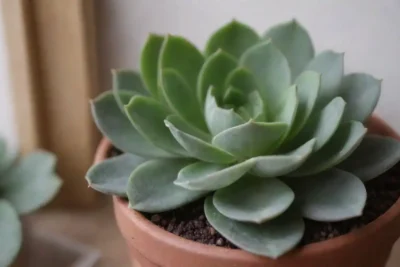
How to Care for Succulents During the Changing Seasons

Introduction
Succulents are engaging and resilient plant species that have won the hearts of garden enthusiasts and casual plant owners alike. These fascinating plants are characterized by their fleshy parts, typically leaves and stems, which store water and help them endure arid conditions. Popular for their aesthetic appeal, low maintenance, and adaptability, succulents can thrive in various environments. However, cultivating these plants necessitates understanding their specific care needs, especially as seasons change.
This article delves into the intricacies of succulent care across different seasons, providing you with actionable tips and insights to ensure your green friends flourish, even as temperatures fluctuate and daylight changes. We will explore the unique requirements of succulents in spring, summer, fall, and winter. By understanding how these plants react to various environmental conditions, you can proactively adjust their care routines and help them thrive throughout the year.
Seasonal Changes and Their Impact on Succulents
Every season brings about significant changes that affect the growth and health of your succulents. Understanding how each season influences these plants allows you to adapt your care practices accordingly. Environmental factors such as temperature, light availability, humidity, and watering frequency vary significantly from one season to another. As a succulent owner, keen awareness of these factors is crucial to ensuring the longevity of your plants.
Spring: New Growth and Increased Light
As spring arrives, succulents typically experience renewed growth due to warming temperatures and increased light exposure. During this season, it is essential to monitor the overall well-being of your plants, as this period of growth demands more nutrients and suitable conditions to thrive.
Watering: In spring, succulents begin to absorb more water as the soil warms up and becomes more conducive to moisture uptake. This is generally the time to resume or increase your watering schedule. However, be careful not to overwater; it is critical to let the soil dry out completely between waterings, as this prevents root rot.
Light: Increased sunlight exposure in spring means that your succulents can benefit from bright, direct light. If your plants have been indoors during the winter months, you may want to gradually reintroduce them to full sun to avoid shocking them. Aim for approximately 6 hours of sunlight per day, considering rotating them periodically to ensure balanced exposure.
Fertilizing: Spring is an excellent time to begin fertilizing your succulents. Use a water-soluble fertilizer specifically designed for cacti and succulents. Diluting the fertilizer to half-strength is usually advisable during the initial feedings. Fertilizing every four to six weeks during the growing season can promote healthy growth.
 How Holidays Influence Succulent Care Across the Seasons
How Holidays Influence Succulent Care Across the Seasons
Summer: Maintenance and Temperature Management
Summer can be a challenging time for succulent owners, particularly where temperature management is concerned. The intense heat can affect your plants' needs and care regimen.
Watering: In summer, succulents can require more frequent watering, particularly if they are outside and the temperature rises significantly. During these hot months, you might find that your plants wilt if left too dry. A helpful rule of thumb is to check the soil moisture level – if it feels completely dry an inch deep, it's time for watering. Early morning or late afternoon is the best time to water, as this helps avoid evaporation caused by midday heat.
Sun Protection: Surprisingly, very high temperatures and intense sunlight can damage some succulents, especially those not used to direct sunlight exposure. Sudden shifts to extreme light can result in sunburn, visible as brown spots or a bleached appearance on leaves. Introducing shade cloth or relocating plants temporarily during heat waves can help mitigate this risk.
Pest Management: Summer is also a season when pests, such as mealybugs and aphids, become more active. Regularly inspecting your plants will enable you to catch any infestations early. If pests are detected, you can use commercial insecticidal soap or a natural mixture of water and dish soap to eliminate them effectively.
Fall: Preparing for Dormancy
As temperatures begin to drop and daylight hours shorten, fall invites succulent owners to prepare their plants for the upcoming dormant period. Proper care during this transition is essential to ensure healthy succulents.
Watering Adjustments: While succulents require less water in the fall than they did during the warmer seasons, it is still essential to monitor their needs. As temperatures cool, allow the soil to dry but avoid letting them become completely parched. You might find that watering every few weeks is sufficient.
Light Levels: As the days shorten, succulents may not receive as much sunlight as in the spring and summer. You might need to adjust their positioning to ensure they still get adequate light. Internally, consider placing them near windows where they receive the most light exposure.
 Understanding the Dormant Phase of Succulents in Winter
Understanding the Dormant Phase of Succulents in WinterPreparing for Dormancy: Fall is the time to reduce feeding. Your succulents will start to slow their growth, making additional nutrients unnecessary. Ceasing fertilization will help your plants prepare for dormancy, allowing them to reserve energy for the winter ahead.
Winter: Dormant Care and Maintaining Vitality
Winter presents unique challenges as many succulents enter a dormancy period. Understanding their dormancy cycle is crucial for ensuring their survival through the colder months.
Minimal Watering: During winter dormancy, succulents require very little water. Depending on your climate and indoor heating, you may find that watering once a month or even less frequently is ideal. The key is to thoroughly moisture check your soil before watering, ensuring it's completely dry.
Temperature Necessities: Succulents can be sensitive to extreme cold, making it vital to monitor temperatures, especially if they are outdoors. Ideally, you should keep indoor succulents in a room with temperatures between 60-70°F (15-22°C). If you live in colder climates, consider bringing your outdoor plants indoors or providing them with protective coverings.
Enhancing Importance of Light: During winter, with shorter daylight hours, succulents can suffer from inadequate light exposure, leading to etiolation – a condition where they grow long and leggy in search of light. To combat this, you may consider using grow lights to supplement natural light, ensuring your plants remain healthy and vibrant.
Conclusion

Caring for succulents throughout the changing seasons is a fulfilling journey that allows plant owners to form a unique connection with their leafy companions. By understanding the distinct needs of these remarkable plants in spring, summer, fall, and winter, you'll be better equipped to provide them with the care they deserve. Remember, the key to thriving succulents lies in adapting care methods to account for seasonal changes in temperature, light availability, watering needs, and overall growth cycles.
 Succulent Care: Navigating the Winter Dormancy Period
Succulent Care: Navigating the Winter Dormancy PeriodEach season presents its challenges and opportunities for growth. As you embark on this seasonal journey with your succulents, keeping a close eye on their behavior and needs is essential. A proactive and attentive approach ensures that your plants will not only survive but thrive, bringing beauty and vibrancy to your living space throughout the year.
In summary, with a touch of patience, keen observation, and a willingness to adapt, you can make the most of every season for your succulents. Whether they’re basking in the spring sun or resting in the winter months, your mindful care will help create a flourishing environment for these magnificent plants. Happy gardening!
If you want to read more articles similar to How to Care for Succulents During the Changing Seasons, you can visit the Seasonal Changes category.


You Must Read